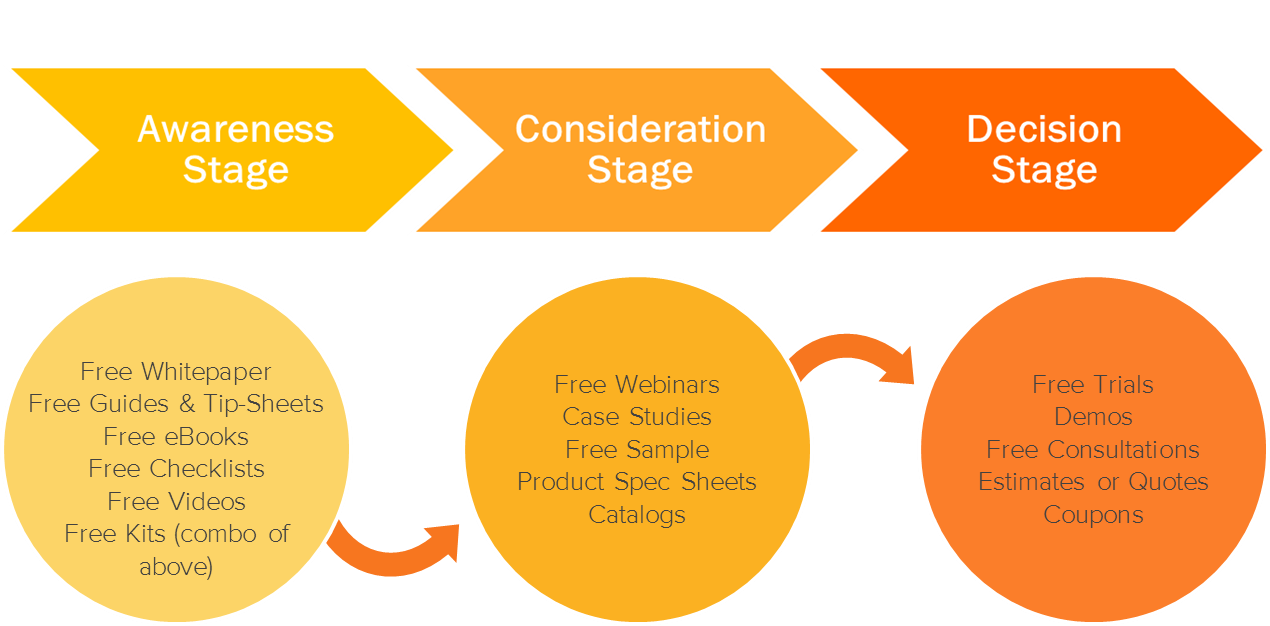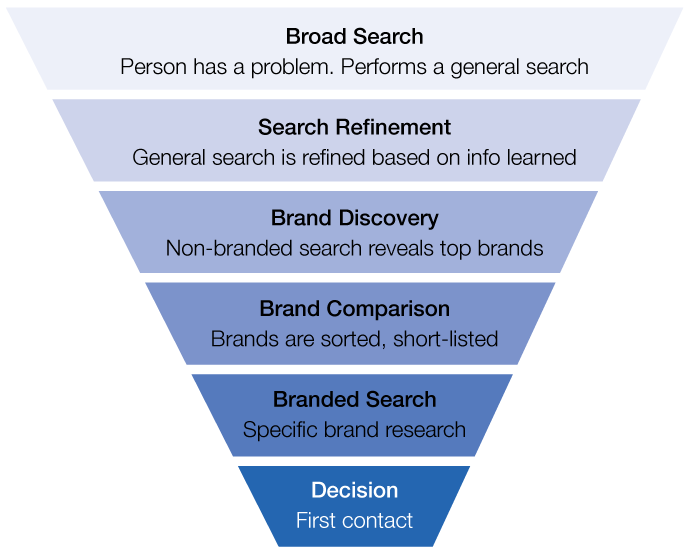The Role of Reputation In the Customers Journey
Imagine a prospect is making the tough decision between using your company or your competitor. At the last minute they discover something a bit “off” about your company’s online profile. Which company will get the sale?
It could be a review, a lack of publicity, a problem with your Wikipedia page, or many other things. How does reputation play into the buyers journey?
There are a host of factors at play in the process of turning a potential customer into a person who is using your services or buying your product. This is the “customer journey,” and there are various hurdles for you to scale successfully to bring a new client to your business through this journey. Understanding how your reputation fits into the journey is an important part of facilitating a positive end result.
How reputation affects the customer journey
Consider the following two scenarios, each a different example of a customer journey.
Buyers journey scenario one
Eli is interested in buying a new refrigerator. He does some comparison shopping online, selecting two models that fit the style, availability, and price he’s looking for. He then turns to the reviews. Refrigerator A has four and a half stars and feedback from a hundred previous purchasers. Refrigerator B has five stars, but just one review. He purchases refrigerator A.
Buyers journey scenario two
Miranda is interested in buying a new refrigerator. She types “what is the best refrigerator” into a search engine box. Millions of results appear, but like most people she only looks at the first few listings, then she refines and searches again. After refining her search she notes a few brands seem to have good search results, so she focuses on those, ultimately purchasing a refrigerator from one of those manufacturer’s websites.
Although these scenarios are different, they share one thing in common. What ultimately determined which company won the sale was the reputation of the seller – in customer reviews in Eli’s case, and in generalized search results in Miranda’s case.
Why customer experience matters
No company is in the business of losing business. To grow is to convert potential customers into (ideally) recurring customers. This is done by optimizing customer journeys to lead directly to a company’s product or service, and ensuring that when they get there, the company’s immaculate reputation seals the deal. Reputation is about trust bestowed on a company by third-parties.
Reputation is trust bestowed on a company by third parties
Positive customer experiences have a multiplying power, bringing in new business as well as keeping current customers onboard. However, it’s much harder to pull in a first time customer than it is to keep existing customers. This is because while existing customers can use their own experiences to make judgments, new customers must rely on what other people are saying about a business in order to make a buying decision and the field is larger.
A study from Dimensional Research found that 88% of people have had their customer journey impacted by online reviews. That’s a hefty percentage, and all the more proof that modern companies need to monitor and manage their reputations online.
The Steps of a Customer Journey
The graph above depicts the buyers journey and the content used to help people along the path to becoming a customer.
The customer journey can be broken down into three distinct parts: Awareness, Consideration and Decision. From a reputation management perspective we are concerned with the journey in a slightly more nuanced way. We know people comparison shop, so we want a brand to shine when compared to others. This is how we see the journey:
Customer journeys differ based on the product or service in question. For example, a customer looking for a yoga studio to join may look at location, price, and how the class schedule aligns with their own schedule during the journey. A customer looking to purchase a new guitar will be more concerned with qualities of the guitar: its price, style, function, and availability.
Regardless of the product or service, at some point in the journey a customer is likely to interact with the opinions of others – whether it’s the next-door neighbor, the guy behind the desk at the guitar store, or an anonymous commenter online. This last one can keep a business from ever interacting with a prospective customer in the first place if it’s not better than the competition.
As a business, you have the power to tailor the details of your product or service in a way that is most likely to bring in the customers you want. Once you bring a potential customer far enough down the road that their last consideration is your reputation, it’s up to you to cultivate an environment in which a new client will feel comfortable taking the final step.
Devising a customer experience strategy
Your reputation is going to exist with or without your own efforts, so why leave it to chance? Do what you can within the confines of your time, energy, and budget to assure you have a positive reputation in the eyes of your customers. Here’s how you can enhance the “brand comparison” part of the journey.
Perform market analyses to understand how customers are searching for and buying your products and services. Are they going straight to your Yelp page or comparison shopping on another website? You can often find this information in your website analytics.
Are they primarily finding you through your social media efforts or by following your backlinks from other sites (called a “referral”)? Take into consideration the purchasing behaviors that are typical of your industry, as well as the product influences and ad strategies that most commonly lead to successfully bringing in more customers, and then adapt your marketing strategies as needed.
Next, be a human. Really connect with your customers, rather than seeing them as numbers on an analytics dashboard – we aren’t bashing dashboards, we love them. This has to be done proactively, and, in many cases, retroactively. Inspire good reviews by listening to your customers, knowing their preferences, and providing exceptional customer service.
Successful businesses focus on customer experience
Participants of Dimensional Research’s study said that customer service was the number one factor impacting their trust in a vendor. 45% of them share their bad customer service experiences online, compared to the 30% who share their good experiences. That’s unfortunate because it can mean that one slip up is worth more than one good deed.
It’s worth it for the continued success of your business to put as much care into providing top-notch customer service as you do to your other areas of innovation. Hire the people that share your values (if you have good values!), stay focused on the end goals, always treat your customers with respect, and you won’t have to wait long to see the ROI.
The importance of consistency
A 2014 report from McKinsey found that satisfaction on customer journeys is a 30% more predictive measure of a customer’s overall satisfaction than happiness for an individual interaction. When customers were satisfied with their journeys, this:
- Increased overall customer satisfaction by 20%
- Lifted revenue by 15%
- Reduced the cost of serving customers by as much as 20%
Consistency in the customer journey means taking care to maximize each step, from inquiry to post-purchase activity. It means being diligent in responding to inquiries from potential clients as well as providing solutions to current customers when needed.
The customer’s journey lasts as long as they continue to use your product or service. Enhancing their experience from first inquiry to last use isn’t just necessary for growing and sustaining your business, it’s a crucial part of building a client base in today’s Internet-centered marketplace.
Customer Journey and Reputation FAQs
What is the customer journey?
The customer journey is the process in which a potential customer becomes an actual customer. There are a host of factors at play during this process, and every customer’s journey is unique.
Why is customer experience important?
Customer experience is important because it is a driving factor for revenue. Optimizing the customer journey with excellent experiences will help build your brand and keep you one step ahead of the competition.
What are the steps of a customer journey?
The customer journey can be broken down into three main stages: awareness, consideration, and decision. The customer will start by researching your brand (think reading blogs and watching videos). She will then engage more and more until she decides to purchase your product or services.
Tags: Business Reputation Repair.


